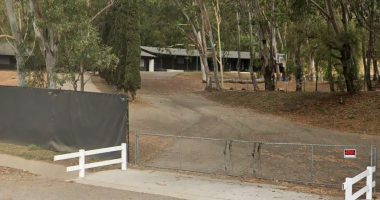
A top Federal Reserve official warned that extended high inflation through next spring could force the central bank to consider raising interest rates sooner than anticipated.
Fed governor Randal Quarles said Wednesday he still expects higher prices to ease next year as bottlenecks and supply-chain disruptions fade. If the Fed raised rates in response to recent price surges driven by the economic reopening, the central bank could constrict demand at the same moment that supply bottlenecks abate, Mr. Quarles said during a moderated discussion at a conference in Los Angeles. That could lead to undesirably low levels of inflation and employment.
“The flipside of that dilemma…is that ‘transitory’ doesn’t necessarily mean ‘short lived,’” Mr. Quarles said. The danger for the Fed is that longer-lasting supply-chain bottlenecks risk leading consumers and businesses to expect higher inflation in the future, which could force the Fed to respond by raising rates. He cited a related risk from additional government stimulus by the Biden administration that could put pressure on prices by boosting demand.
“We can tolerate, if you will, an extended period of 2.5% inflation…much longer than we could an extended period of 4% inflation,” said Mr. Quarles. “If we are still seeing 4% inflation…next spring, then I think we might have to reassess the speed with which we would be thinking about raising interest rates.”
The Fed lowered interest rates to near zero and started a large-scale bond-buying program to support the economy when the pandemic hit in March 2020.
Officials recently settled on an approach that would reduce the bond-buying program beginning next month and ending it by next June. They are separately weighing when to start raising rates after that, with this year’s inflation surge weighing heavily on that decision.
Meanwhile, Senate Democrats are negotiating over how to winnow a $3.5 trillion antipoverty, healthcare and climate plan that they hope to approve in the coming weeks without Republican support. The Senate has separately approved a bipartisan infrastructure bill that would spend around $1 trillion.
Mr. Quarles is the third member of the Fed’s board of governors in recent days to raise concerns about a more persistent interval of higher inflation. Until recently, worries about higher inflation have primarily been voiced by some of the system’s 12 reserve bank presidents, as opposed to the six Washington-based governors. The governors and a rotating group of regional presidents sit on the Fed’s rate-setting policy committee.
Rising vaccination rates and nearly $2.8 trillion in federal spending approved since December have produced a recovery like none in recent memory. So-called core prices that exclude volatile food and energy categories rose 3.6% in August from a year earlier, using the Fed’s preferred gauge.
A separate Fed report, known as the Beige Book, said that U.S. economic growth slowed this fall as companies confronted supply-chain disruptions and saw “significantly elevated prices” due to higher costs for raw material and shipping.
The outlook on inflation and fiscal policy aren’t the only sources of uncertainty clouding monetary policy going forward. President Joe Biden has yet to announce who should lead the central bank after the term of Fed Chairman Jerome Powell and Vice Chairman Richard Clarida expire early next year.
Mr. Quarles’s four-year term as vice chairman for bank supervision expired last week, and the White House has yet to nominate someone to take his place. Mr. Quarles’s term as governor extends for another decade, though it isn’t clear for how long he will remain on the Fed’s board after his term serving as chairman of the Financial Stability Board, an international body of financial regulators, expires in December.
The upshot is that officials’ latest guidance around how the central bank is navigating an uncertain economic outlook may be less useful in shaping investors’ thinking because it isn’t clear who will steer the Fed’s policy-making deliberations next year.
Write to Nick Timiraos at [email protected]
Copyright ©2021 Dow Jones & Company, Inc. All Rights Reserved. 87990cbe856818d5eddac44c7b1cdeb8









